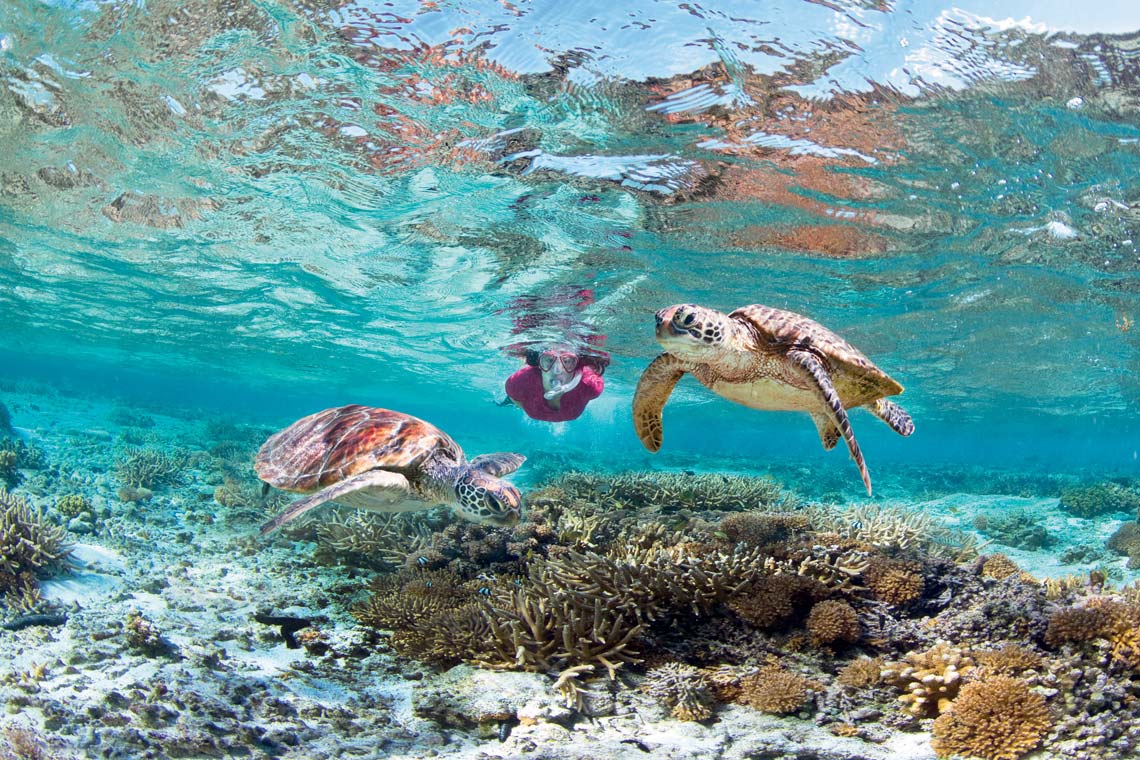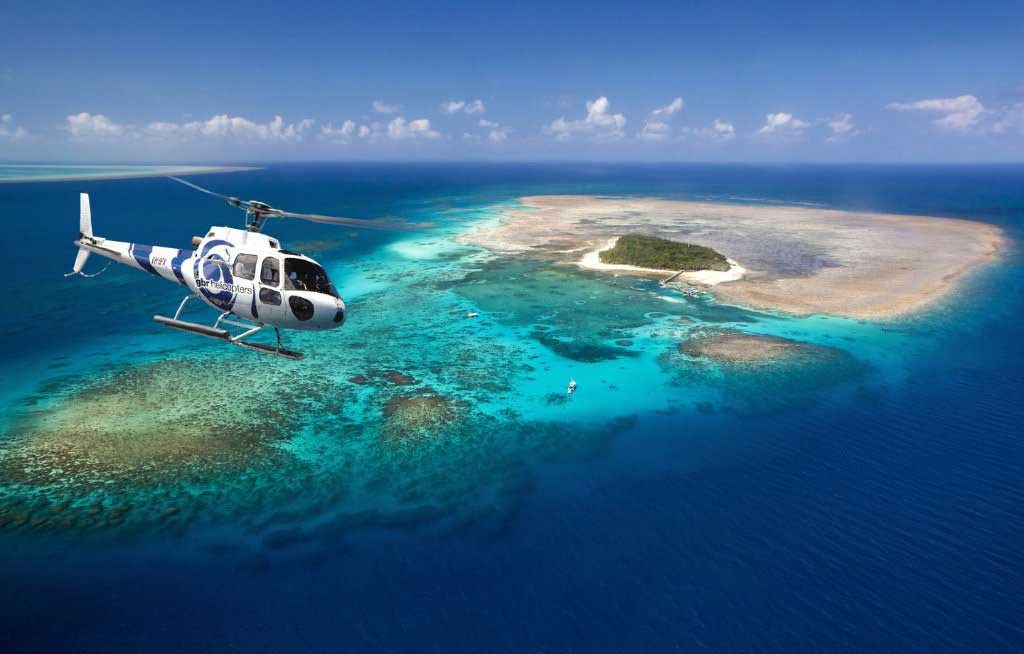If you’re heading down under and you love the ocean, you surely won’t pass up on the chance to see the world’s largest coral reef system, the Great Barrier Reef. However, with 2900 reefs and 900 islands stretching over 2,300 kilometers at sea, the task of planning for a trip can be a bit daunting.
In this article, we’ll lay out all the things that you need to know to help you plan an awesome Great Barrier Reef snorkeling trip. Read on!
Best Ways to Experience the Great Barrier Reef
Of course nothing beats seeing the Great Barrier reef up close when you snorkel or dive but there are a great number of ways to enjoy this wonder, even for the non-swimmers/snorkelers.
Diving/Snorkeling
Explore the vibrant and flourishing marine life up close. Regardless of your level (beginner or advanced divers/snorkelers), there is a suitable diving spot for you. Ask your tour operator for boat dive or shore dive choices. Swim-throughs, caves, ledges will challenge the advanced divers while brightly colored reef fish species will entertain beginners swimming close to the surface. Depending on the reef that you want to explore, you can either stay at anchored pontoons or live-aboards for longer dive trips.
Stay at one of the islands
If you would prefer to spend more time on land than at sea, spend the night at one of the islands. Book your accommodations at Green Island or Fitzroy Island and enjoy the amenities of a resort while exploring the surrounding fringing reefs. Go for a leisurely swim and don’t forget to bring your snorkeling gear with you.
Go on a glass-bottom boat trip
Don’t want to get wet during your trip? Choose a tour with a glass-bottom or a semi-submersible trip. You’ll get to see the corals, nudibranchs, anemonefish, parrotfish, trevally and a host of other fishes without getting soaked. Here’s a tip: some dive operators offer boat diving tours plus a glass-bottom boat tour. If you’re in a group of a mix of divers and non-divers (including kids and elderly), this is definitely the ideal way to seeing the Great Barrier reef. Everybody wins.
See the reef from up above
Did you know that the Great Barrier Reef could be seen from outer space? Experience at least a small fraction of what astronauts see as you fly and get a bird’s eye view of the area. Several helicopter and seaplane operators offer tours that will take you above the reef, the rainforest, and even the chance to experience a water landing if you wish. Check out special fly-and-cruise packages too.
Best Time to Go
The Great Barrier Reef is considered an all-year round destination but if you want to go during favorable weather conditions, the months of July to September (Southern winter to spring seasons) is the best time to go. If you’re lucky, you might also see migrating whales during these months too.
Weather-wise, there are more chances of rain during the summer/autumn season from January to April when it’s hot and humid. Also, be cautious of marine stingers (poisonous jellyfish) during these months and wear appropriate suits for protection.
How To Get There
Once you get to Australia, choose from any of the jump-off points for your Great Barrier Reef Tour: Cairns, Port Douglas, Cape Tribulation, Townsville, or Whitsundays, and fly domestic to the nearest airport.
If you’re heading to Undine, Mackay, and Agincourt Reefs, Cape Tribulation is the nearest. Meanwhile, Kelso and Davies reefs are nearer to Townsville. Both Cairns and Port Douglas are popular jump-off points and feature an assortment of resorts and amenities for tourists. Make arrangements with your dive tour operator for airport pick-up or driving directions.
Suggested Itineraries
Day Trip: Pressed for Time
If you only have a day to spare, sign up with tour operators offering day trips to Inner barrier reefs such as Green Island, Agincourt Reef, and Low Isles. You can also choose to snorkel for a couple of hours or to book a glass-bottom boat tour. Day tours usually start to leave at 8AM and back to the jump-off by 5PM.
Three to Four Days: Ideal Length
Allot a couple more days for a relaxed trip. For a 3-4 days trip, you can spend a night at Green Island, explore an outer barrier reef, and spend a day snorkeling or diving at Fitzroy or Upolu Cay. You can also squeeze more time to see more than the reef. Queensland is also home to Daintree National Park, Tully River rapids, and the Tjapukai Aboriginal Cultural Park.
Seven Days and More: Here to Dive
Go on a diving expedition and join live-aboard tours. Longer tours can take you to the farthest outer reefs in the Coral Sea. Think of big fish action at Osprey Reef, 350 kilometers away from Cairns.
Most divers recommend exploring the outer reefs (better experience) as compared to inner reefs as long as you have enough time. Seven to ten days is an ideal length to dive several spots per day, including night dives. You’ll need to work closely with your dive tour company in choosing the spots since the outer reefs are hundreds of miles away from the mainland.
Reminders
Here are important reminders when snorkeling:
- Don’t litter. Bring all your trash back to the mainland with you.
- Don’t touch, stand, or walk on a coral. If you need to stand on sand near one, do it in a way that won’t disturb the coral.
- Don’t feed the fish or any other marine life.
- Use only reef-friendly sunscreen or wear a wet suit.
- Be mindful of your fins and swim horizontally.
***
Did this post help you in drafting your Great Barrier Reef snorkeling trip plan? Let us know in the comments section.


